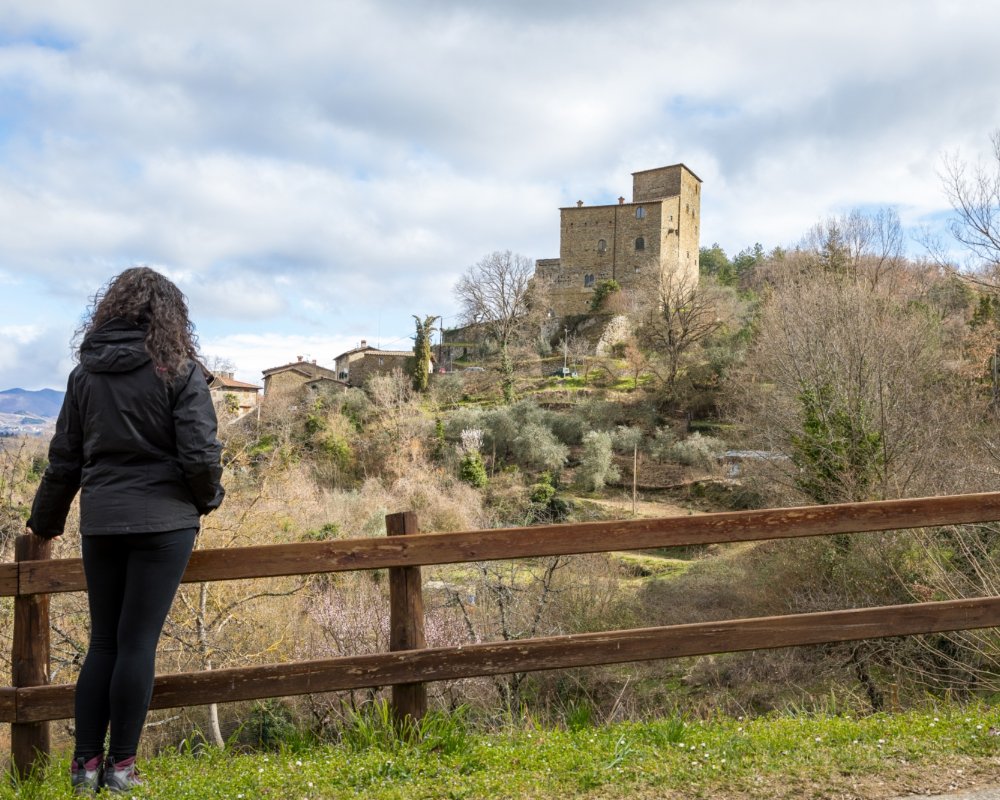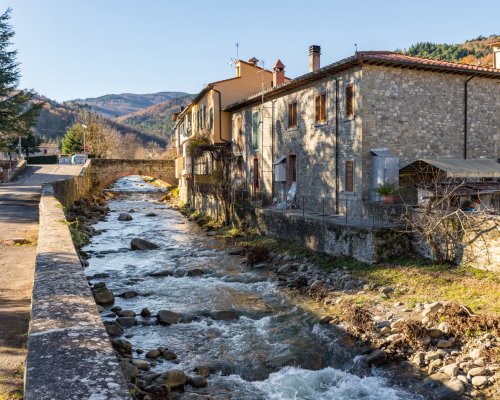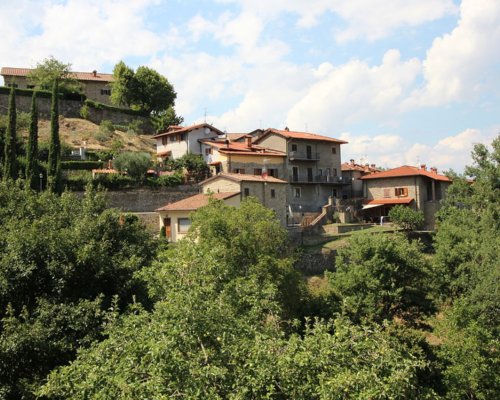Places rich in history, legends and top-quality food products
Trekking the wide valley in the Casentino, you can experience a splendid itinerary filled with taste that leads you to the most interesting places in this fascinating territory, a vast amphitheatre bordered by the Pratomagno, Monte Falterona and the Alpe di Catenaia.
Beginning the journey from the south, after taking the SR71 to Rassina, veer to the left in the direction of Pieve di Socana, essential for enjoying an immensely interesting building: an ancient place of worship that preserves the ruins of an Etruscan sacrificial altar. Nearby is the lovely village of Talla, where you can visit the eco-museum housed inside the home of Guido Monaco and the Documentation Centre on Medieval Music.
Beginning the journey from the south, after taking the SR71 to Rassina, veer to the left in the direction of Pieve di Socana, essential for enjoying an immensely interesting building: an ancient place of worship that preserves the ruins of an Etruscan sacrificial altar. Nearby is the lovely village of Talla, where you can visit the eco-museum housed inside the home of Guido Monaco and the Documentation Centre on Medieval Music.
Returning to the state road, head to Bibbiena, an interesting city marked by both medieval and Renaissance characteristics. The journey continues further west, stopping in Ortignano-Raggiolo, home to the Chestnut Ecomuseum, highlighting a fundamental product for the local economy, which is used to make sweet flour, a common ingredient in kitchen for castagnaccio and the famous sweet polenta, excellent if eaten with ricotta.
Returning to the state road, head to Bibbiena, an interesting city marked by both medieval and Renaissance characteristics. The journey continues further west, stopping in Ortignano-Raggiolo, home to the Chestnut Ecomuseum, highlighting a fundamental product for the local economy, which is used to make sweet flour, a common ingredient in kitchen for castagnaccio and the famous sweet polenta, excellent if eaten with ricotta.
Continuing north, you’ll come across Poppi, which dominates from above with its historic castle that once belonged to the Guidi counts. Castel San Niccolò and Montemignaio on the eastern end of the Casentino are other stops on this itinerary; here, the villages are surrounded by forests that are home to excellent products, like mushrooms.
Move further up the Arno valley until you reach Pratovecchio, where just beyond the town is the beautiful Parish Church in Romena, a gem of Romanesque architecture located right next to the namesake castle, the ruins of which are still visible today.
The village of Stia, with its famous piazza Tanucci and the Parish Church of Santa Maria Assunta, is the “home” of the warm Casentino cloth.
Continuing north, you’ll come across Poppi, which dominates from above with its historic castle that once belonged to the Guidi counts. Castel San Niccolò and Montemignaio on the eastern end of the Casentino are other stops on this itinerary; here, the villages are surrounded by forests that are home to excellent products, like mushrooms.
Move further up the Arno valley until you reach Pratovecchio, where just beyond the town is the beautiful Parish Church in Romena, a gem of Romanesque architecture located right next to the namesake castle, the ruins of which are still visible today.
The village of Stia, with its famous piazza Tanucci and the Parish Church of Santa Maria Assunta, is the “home” of the warm Casentino cloth.
Head back to the road to complete your journey toward the south. You’ll surely want to stop in Camaldoli, which is surrounded by the millennia-old forest of the National Park of the Foreste Casentinesi, Monte Falterona Campigna. Camaldoli is one of the most important spiritual centres in Tuscany, tied to St. Romuald.
La Verna is the sacred mountain of St. Francis, where you can see the splendid glazed terracottas made by Andrea della Robbia. The return journey to the valley ends in Chitignano, home to the Museum of Gunpowder and Smuggling.
Head back to the road to complete your journey toward the south. You’ll surely want to stop in Camaldoli, which is surrounded by the millennia-old forest of the National Park of the Foreste Casentinesi, Monte Falterona Campigna. Camaldoli is one of the most important spiritual centres in Tuscany, tied to St. Romuald.
La Verna is the sacred mountain of St. Francis, where you can see the splendid glazed terracottas made by Andrea della Robbia. The return journey to the valley ends in Chitignano, home to the Museum of Gunpowder and Smuggling.


